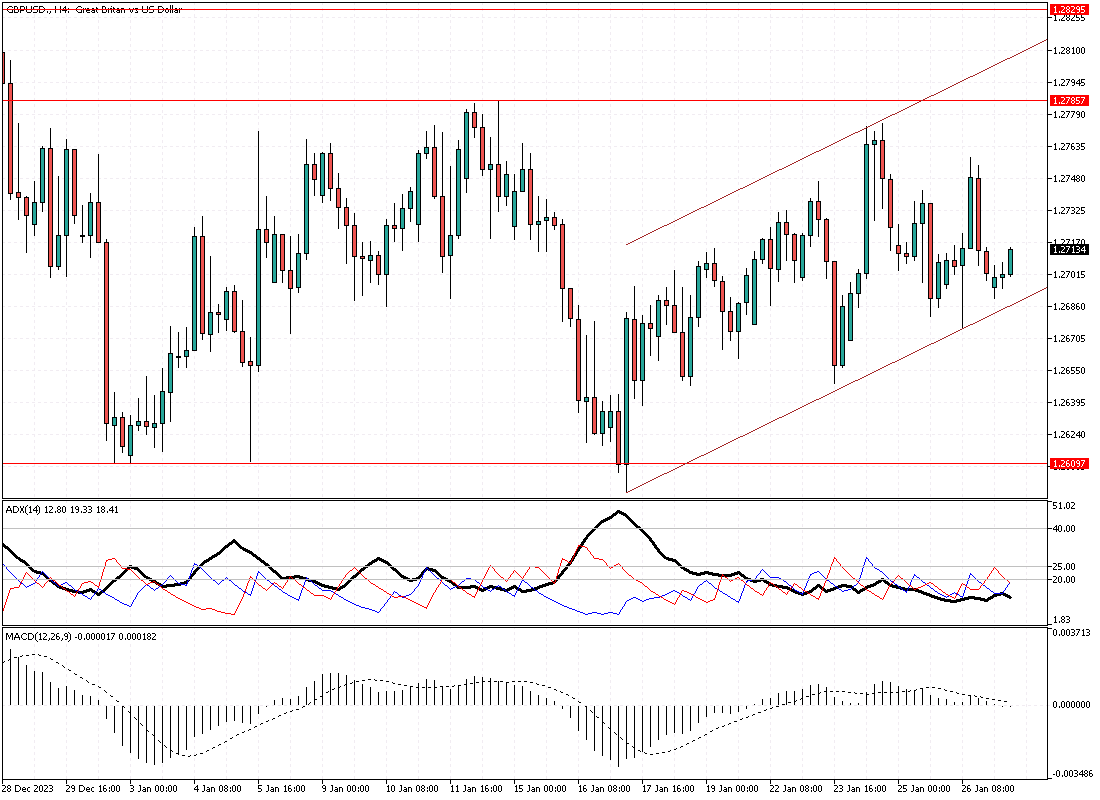GBPUSD Analysis – January-29-2024
The GBPUSD pair has been on the rise, nearing $1.28 and achieving its highest position in almost five months compared to the euro. This surge can be attributed to the unexpectedly robust PMI data, which suggests a slower approach by the Bank of England in reducing borrowing costs may be warranted. The recent PMI survey unveiled a notable expansion in Britain’s private sector, marking the most substantial growth in seven months. Notably, the service sector experienced its most rapid growth since May, underlining the resilience of this vital segment of the UK economy.
Budget Surpluses and Retail Challenges
The UK’s fiscal landscape shows mixed signals. Early economic data indicated a smaller-than-anticipated budget deficit for December, hinting at potential room for tax reductions in the upcoming March budget. This fiscal prudence could benefit the economy, offering a cushion against potential downturns. However, the picture isn’t entirely rosy. Reports have pointed out the steepest fall in UK retail sales since January 2021, a concerning sign for domestic consumption. Furthermore, an unexpected uptick in the inflation rate adds complexity to the economic scenario, potentially influencing future monetary policy decisions.
Interest Rates: A Cautious Approach
As the Bank of England gears up for its meeting on February 1st, expectations are set for maintaining the interest rate at a 15-year peak of 5.25%. This conservative stance contrasts with the anticipated rate cuts from its counterparts in the Euro Area and the US later this year. The Bank’s cautious approach reflects a balancing act between stimulating economic growth and controlling inflationary pressures. In the face of global economic shifts, the decision to hold rates steady underscores the Bank’s commitment to a measured and data-driven approach to navigating the complexities of the current financial landscape.







